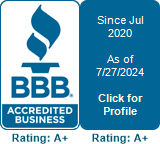Understanding Dental Practice Valuations
An accurate dental practice valuation is essential when it comes to embarking on the journey of buying or selling a dental practice. An accurate evaluation will let a dentist know if this transition is affordable and if it is a wise financial decision for the future. There is no single standard when it comes to determining the value of a dental practice. Value is determined by what real-world buyers are willing to pay. This can be influenced by the current market as well as supply and demand. The way to properly value a dental practice would be to take the real-world demand combined with the actual numbers involved with the practice's previous years of business. The McNor Group has been working with independent dentists for years and can help you get a better understanding of what financial opportunities are available to you. Keep reading to learn more about how we help dentists accurately value their practices and potential investments.
Identify the Financial Facts
There are many factors to take into consideration when attempting to determine the value of a dental practice. Typically, a good representation of the value will be reflected by about 75-80% of the previous year's collections. This number can give dental practitioners a starting point that they can use in conjunction with other factors to come up with an appropriate value for their practice. Beyond the previous years collections, some common factors to take into consideration during dental practice valuation include asset value, capitalized excess earnings, net asset value, and average annual earnings. While all these hard facts are necessary to take under advisement, they do not necessarily paint a complete picture.
- Capitalized Excess Earnings - This commonly used valuation method is based on the annual income of the practice. The net income of the practice takes into account the operating expenses, collections, compensation, etc. These factors are then deducted from the net income. The net income is divided by the cap rate, or risk factor (typically around 20-30%). This results in an estimated investment value, which can be taken into consideration for the overall valuation.
- Net Asset Value - Valuation may also take into account the tangible and intangible assets of a dental practice, like real estate or equipment. These assets depreciate in value, so the estimated value will depend on the location of practice, supply, demand, and patient demographics. This method should not be used on it's own, but rather as a contributing factor for a full valuation.
- Average Annual Earnings - This method of valuation is similar to capitalized excess earnings, but it does not take into consideration the compensation of doctors into production. This method considers the practice's net earnings to be available to the owners based on the past three years of financial earnings. This will then be multiplied by a percentage of recent sales and purchases of other dental practices in the area.
Understand What Makes the Practice Unique
Every dental practice is unique, so each practice should be viewed independently. The fact is that each independent dentist has unique offerings and services that makes their practice unique, and everyone's financial health is situational. One thing that simply can't be measured in numbers is patient retention after selling. While every dentist fears a mass exodus, it is actually quite common to keep loyal patients through the transition. The key to success is knowing how to keep those patients even after the change.
Patient Retention is the Key to Success
There are ways to help ease a transition so that most, if not all, patients choose to stay onboard. Through quality care and an effort to maintain the quality customer services that clients have come to expect, it is possible to keep and gain patients after a transition. Our years of experience working with dental professionals gives us the right tools to help create a seamless transition between practice owners. It is actually quite common for production to increase after a sale is complete because younger dentists are more likely to offer a wider range of services than previous practice owners. The uptick in business can be due to excitement for a change in the community, more innovative treatments, and a fresh perspective when it comes to patients' routine dental care.
Quantifying a practice's value can be challenging, but it is possible to do if you have the right background and experience. Call the McNor Group to learn more about determining your dental practice valuation. Our team can work with you to take all areas into consideration so that you are making the right choices for your financial future. Call the McNor Group today at (410) 321-4444 or fill out a contact request form directly on our site and a member of our team will get in touch with you at your convenience. We look forward to helping you achieve major career goals, so call our representatives today.
